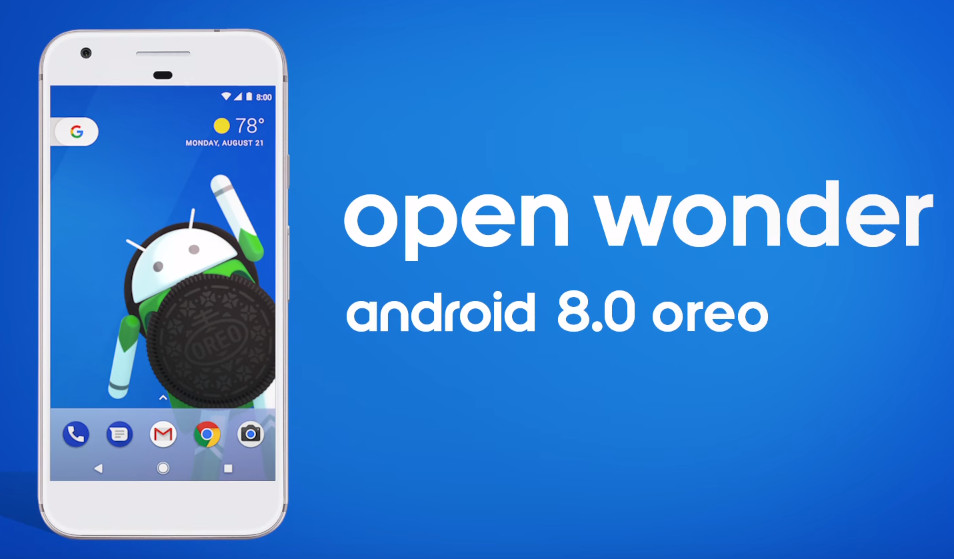

Google has finally confirmed that Android 8.0 ‘O’ will be called Oreo. It has also released final system images for Nexus 5X, Nexus 6P, Nexus Player, Pixel C, Pixel and Pixel XL that can be downloaded from Android developer website here and also started rolling out OTA update for those who have signed up for beta program. It is also pushing sources to Android Open Source Project (AOSP).
Google said that it has been working for last many months with Essential, Huawei, HTC, Kyocera, Motorola, HMD Global Home of Nokia Phones, Samsung, Sharp and Sony who are scheduled to be launching or upgrading new devices to Android 8.0 Oreo by the end of this year.
New features in Android O
- Background limits: Android O puts a big priority on improving a user’s battery life and the device’s interactive performance. Additional automatic limits on what apps can do in the background, in three main areas: implicit broadcasts, background services, and location updates. This will help create apps that have minimal impact on a user’s device and battery.
- Notification channels: Channels let developers give users fine-grained control over different kinds of notifications — users can block or change the behavior of each channel individually, rather than managing all of the app’s notifications together. Android O also adds new visuals and grouping to notifications that make it easier for users to see what’s going on when they have an incoming message or are glancing at the notification shade.
- Snoozing: Users can snooze notifications to reappear at a later time. Notifications reappear with the same level of importance they first appeared with. Apps can remove or update a snoozed notification, but updating a snoozed notification does not cause it to reappear.
- Autofill APIs: Android O adds platform support for autofill. Users can select an autofill app, similar to the way they select a keyboard app. The autofill app stores and secures user data, such as addresses, user names, and even passwords. For apps that want to handle autofill, new APIs are added to implement an Autofill service.
- PIP for handsets and new windowing features: Picture in Picture (PIP) display is now available on phones and tablets, so users can continue watching a video while they’re answering a chat or hailing a car. Apps can put themselves in PiP mode from the resumed or a pausing state where the system supports it – and you can specify the aspect ratio and a set of custom interactions (such as play/pause). Other new windowing features include a new app overlay window for apps to use instead of system alert window, and multi-display support for launching an activity on a remote display.
- Font resources in XML: Fonts are now a fully supported resource type in Android O. Apps can now use fonts in XML layouts as well as define font families in XML — declaring the font style and weight along with the font files.
- Adaptive icons: Adaptive icons support visual effects, and can display a variety of shapes across different device models. The system also animates interactions with the icons, and them in the launcher, shortcuts, Settings, sharing dialogs, and in the overview screen.
- Wide-gamut color for apps: Android developers of imaging apps can now take advantage of new devices that have a wide-gamut color capable display. To display wide gamut images, apps will need to enable a flag in their manifest (per activity) and load bitmaps with an embedded wide color profile (AdobeRGB, Pro Photo RGB, DCI-P3, etc.).
- Connectivity: Support for high-quality Bluetooth audio codecs such as LDAC codec. Wi-Fi Aware, which is based on the Neighbor Awareness Networking (NAN) specification. On devices with the appropriate Wi-Fi Aware hardware, apps and nearby devices can discover and communicate over Wi-Fi without an Internet access point.
- Companion device pairing: Android O provides APIs that allow you to customize the pairing request dialog when trying to pair with companion devices over Bluetooth, BLE, and Wi-Fi.
- Keyboard navigation: More reliable, predictable model for “arrow” and “tab” navigation that aids both developers and end users.
- AAudio API for Pro Audio: AAudio is a new native API that’s designed specifically for apps that require high-performance, low-latency audio. Apps using AAudio read and write data via streams. In the Developer Preview we’re releasing an early version of this new API to get your feedback.
- WebView enhancements: Multiprocess mode by default and API to let your app handle errors and crashes, for enhanced security and improved app stability. As a further security measure, you can now opt in your app’s WebView objects to verify URLs through Google Safe Browsing.
- Java 8 Language APIs and runtime optimizations: Android now supports several new Java Language APIs, including the new java.time API. In addition, the Android Runtime is faster than ever before, with improvements of up to 2x on some application benchmarks.
- Partner platform contributions: Hardware manufacturers and silicon partners have accelerated fixes and enhancements to the Android platform in the O release. Sony has contributed more than 30 feature enhancements, including the LDAC codec, and 250 bug fixes to Android O.

